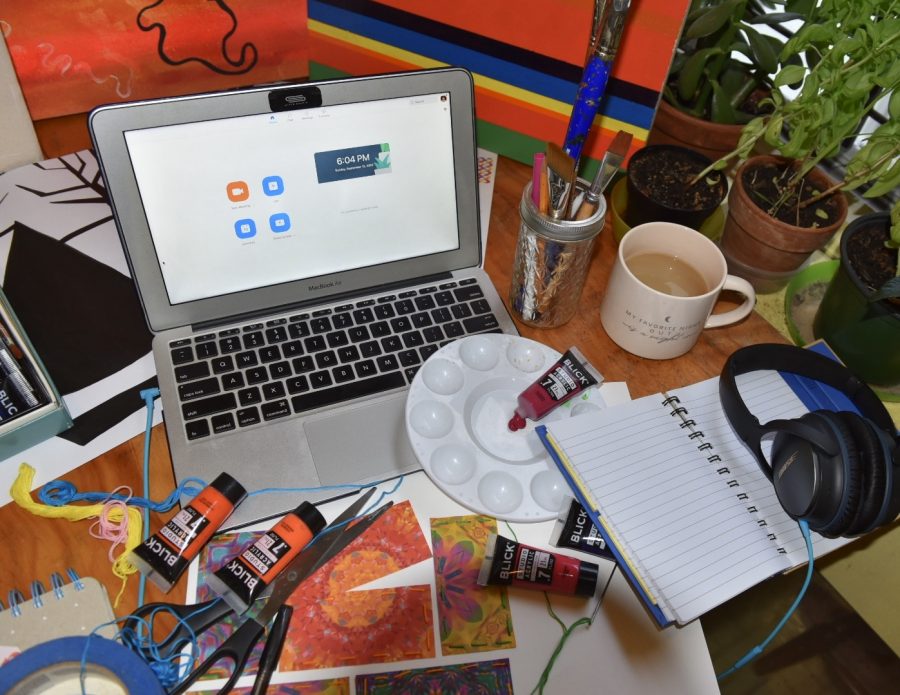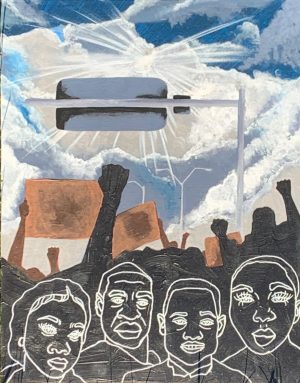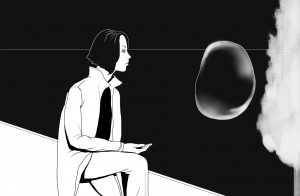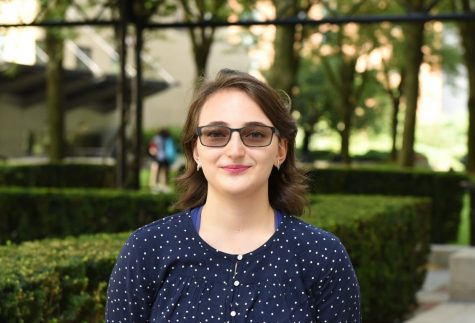Fordham Visual Arts: From Classroom to ‘Class-Zoom’
With the fall semester in full swing, the Fordham visual arts community adapts to a ‘pandemic way of life’
Zoom has proven to be a valuable tool in helping visual arts students adapt to working on their assignments at home. It cannot, however, replace in-person collaboration and instruction, a major component of visual arts classes.
September 17, 2020
Fordham’s visual arts program, whose major concentrations include graphic design, film/video, photography, architecture and painting/drawing, has always served to enlighten its students and push their creative boundaries beyond what an ordinary syllabus requires of them. Last spring, however, visual arts students were forced to leave the Lincoln Center campus behind for the remainder of the semester, and while the faculty tried their best to transition from one mode of learning to another, needless to say, things weren’t going to be exactly the same.
Nevertheless, throughout the summer, the administration began working toward managing the safety of the student body by deploying on-campus health protocols and offering students the option to continue their studies either at home or in the classroom. Because many visual arts students opted to go fully remote for this semester, the faculty had no other choice but to thoroughly modify the hands-on nature of their courses.
“The members of the Department of Theatre & Visual Arts department are practicing professionals, so they are very familiar with creative problem solving and improvisation,” said Stephan Apicella-Hitchcock, a professor of photography and artist-in-residence at the department. “The pivot to online teaching was seamless.”
But in spite of the benefits of virtual communication, Apicella-Hitchcock confidently believes that there is simply no substitute for in-person communication. “We have several classes that are in-person, both at Lincoln Center and on the Rose Hill campus,” Apicella-Hitchcock said. “It is my personal belief that the best teaching happens with both the teacher and the student in the same space. Zoom has been an excellent temporary fix for our social distancing problem.
The possibility of sharing images live and talking with students that are residing in different parts of the world feels incredibly modern and efficient; however, genuinely unique and memorable things happen when humans are in proximity to one another (six feet apart, of course).”
It’s pretty difficult to have a critique over Zoom. One of the best things about art classes is getting to see everyone’s work and being able to discuss it. The closest you can get with that virtually is photographs of each other’s work. Elizabeth McLaughlin
For seniors Elizabeth McLaughlin and Jesse Russell, both Fordham College at Lincoln Center (FCLC) ’21, this semester arguably represents the beginning of the end to their college careers, and chances are, this isn’t how they would have wished to experience it. Russell, a digital technology and emerging media (DTEM) major who just recently decided to explore the program’s opportunities, believes that the shift from Fordham University to “Zoom University” came with a few limitations, the likes of which didn’t necessarily lessen his enjoyment of the program.
“I never really planned on joining the (Visual Arts) program in the first place, but after taking Photo I, Graphic Design & Digital Tools, and Visual Thinking, I realized how absolutely critical it is to ‘think visually’ or otherwise think outside the confines of traditional academics. And I was so impressed with how my Spring 2020 Visual Arts classes transitioned over to virtual learning, there wasn’t much lost in the transition at all,” Russell said.
“However, this semester I focused on taking most courses for my other major so that Spring 2021 I can hopefully return to all in-person Visual Arts classes. Virtual will never come close to being a substitute for in-person learning. That’s not to say the department isn’t doing a good job compensating for these circumstances, because we are all in the same boat here; we are all facing unprecedented difficulties, both staff and students.”

McLaughlin, meanwhile, is more than willing to admit that the shift wasn’t nearly as streamlined as Russell made it out to be. “I think the shift was jarring for everyone,” McLaughlin said. “It’s pretty difficult to have a critique over Zoom. One of the best things about art classes is getting to see everyone’s work and being able to discuss it. The closest you can get with that virtually is photographs of each other’s work. And you often lose things by viewing paintings virtually – whether its size, color, surface texture, etc. It’s not the same experience.”
But even dealing with the unfortunate drawbacks of a virtual education, the least students can do is acknowledge and appreciate the faculty’s efforts to bring the classroom environment into a digital space.
“I’m currently taking Abstraction with Professor Kalina and Graphic Design & Digital Tools with Professor Lown,” Kaila Cordova, FCLC ’22, said. “I really do feel like professors in the department are trying their best. Professor Lown in particular is always asking us if we are comfortable with the workload and is always asking when we need breaks. Professor Kalina has also been super helpful when it comes to us getting access to our supplies. Even though classes are definitely different, both of my professors are really trying their best to make sure that we are all comfortable and not stressed during a very stressful and uncertain time of our lives.”
Virtual learning, as if it wasn’t obvious already, has both advantages and disadvantages. Because of how difficult it is for a professor to engage with their students through an online application such as Zoom or Google Classroom, students aren’t receiving the same educational value when compared to face-to-face instruction.
The members of the Department of Theatre & Visual Arts department are practicing professionals, so they are very familiar with creative problem solving and improvisation. Stephan Apicella-Hitchcock
Still, as both Russell and Apicella-Hitchcock have already mentioned, this mode of learning is only a temporary arrangement. With time, every Fordham student and faculty member will be able to return to the classroom without having to wear a face mask or having to abide by the maximum number of occupants a single classroom can hold.
As of now, though, these restrictions are being imposed for a reason, and until the day arrives when we no longer have to remain overly cautious of our general surroundings and the people we come in contact with, we have to remember that.
















